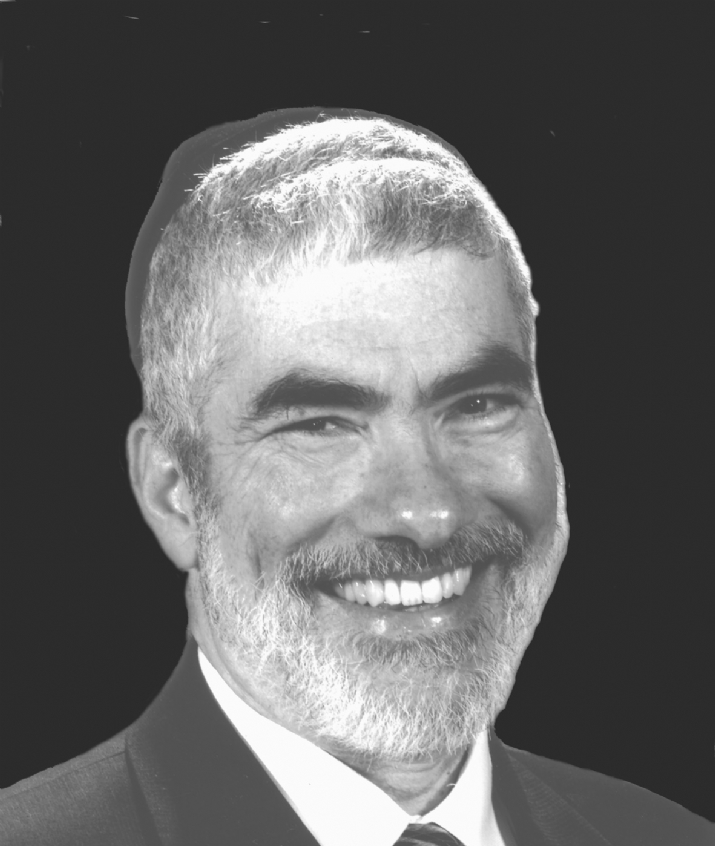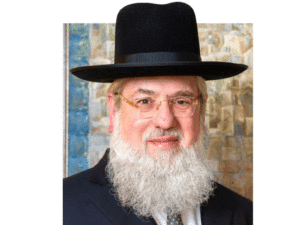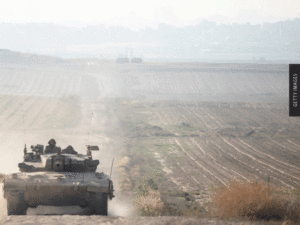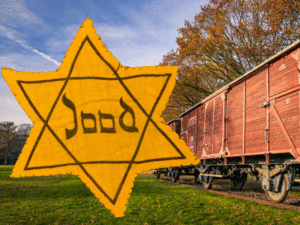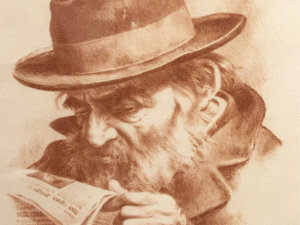VERY FEW, IF ANY, ACADEMIC HISTORIANS who go into the study of labor history do not strongly identify with the union movement. In American labor history, the riot at Chicago’s Haymarket Square on May 4, 1886 occupies an important place in the narrative of rapacious capitalism’s efforts to thwart labor organization. (That narrative, by the way, is not without any basis.) A bomb was thrown during a gathering of anarchists protesting in favor of an eight-hour work day, and when the dust had cleared, seven policemen and a handful of protesters were dead. Eight men were subsequently charged with aiding and abetting murder, of whom four were hung and a fifth committed suicide in jail awaiting execution. The other three were pardoned by Illinois Governor John Peter Altgeld, for which act he merited mention in John F. Kennedy’s Profiles in Courage.
In the standard American history, the conviction of the eight men is portrayed as “one of the great miscarriages in American justice.” One bestselling historian writes that there “was no evidence of their guilt.” In James Green’s Death in the Haymarket (2006), the trial is described as shattering the image of the “United States as a classless society, with liberty and justice for all.” According to these texts, the bomb might well have been thrown by an agent provocateur, and the policemen were killed by friendly fire in the ensuing panic.
While still a college undergraduate, Timothy Messer-Kruse attended the centenary of the Haymarket protest, and the number of “young people in attendance and their passion for working class causes” left a deep impression that influenced his decision to specialize in labor history. He had no reason to question the standard version until a student in his American labor history class at the University of Toledo asked him a question he could not answer: “If what it says in our textbook is true, that there was no evidence whatsoever connecting the convicted men to the bombing, then what did they talk about in the courtroom for six weeks?” Messer-Kruse mumbled something about paid witnesses, but he could not get the question out of his head.
Subsequently, he discovered the trial transcript in the archives of the Chicago Historical Society. As he poured over thousands of pages, he realized that previous historians had not seen the trial transcript but were basing their claims on the trial briefs of the defense attorneys.
Messer-Kruse became obsessed with the case and built a scale-model diorama of the site in his basement. Over time, he came to the conclusion that the Chicago anarchists belonged to an international network of radicals who believed that only violence could bring social change. He identified Louis Lingg, who committed suicide in prison, as the builder of the bomb, and the person who threw it as Rudolph Schnaubelt, who fled the scene and was never heard of again. He also questioned the claim that most of the dead policemen were killed by friendly fire.
Messer-Kruse expected his findings, upending the received wisdom in the field, to be received with skepticism when he first presented them at an academic conference. What he encountered instead was a total refusal to confront the evidence he presented. One Canadian academic wrote in rebuttal that the anarchists were “human, gentle, kindly souls,” whose blood is on the hands of the “capitalist class” and would be on the lips as well of any who drink “of this old wine adorned with the new label of Messer-Kruse.”
Messer-Kruse has now published two books on the subject, and the above-quoted academic, as well as the writers who described the Haymarket trial as a “one of the greatest miscarriages of justice” and as having exposed the falsity of America’s self-image as a land of liberty and justice, all told John J. Miller, who wrote a long article on Messer-Kruse in the January National Review, that they had not read Messer-Kruse’s books. Better to ignore contrary evidence than deal with it.
Messer-Kruse is, in my book, a hero for having tried to provide an honest answer to a student’s question and following the evidence where it led him, despite having undermined one of the foundational “myths” upon which he made his initial career choice and subjected himself to a fair amount of calumny within his professional guild.
NICKY LARKIN, A YOUNG IRISH FILMMAKER, is another hero. Identification with the Palestinian cause is almost universal in Ireland. The Irish tend to see everything through the lens of their lengthy struggle against British rule, just as former Secretary of State Condoleezza Rice viewed the Palestinian-Israeli conflict through the lens of her childhood in segregated Birmingham. The Republican battle against the British has imbued the Irish with strong sympathies to the underdog.
Boycotts of Israeli produce have been successful in Ireland, and the national organization of creative artists is officially on record as supporting a cultural boycott of Israel. Recently, Dublin’s main thoroughfare witnessed mock executions of Palestinians by Israeli troops.
Such is the cultural milieu in which Larkin grew up. He was outraged by Operation Cast Lead, in which “only” 13 Israelis and over 1,200 Gazans were killed, and applied for an Arts Council Grant to come to Israel to make a film portraying the Israeli “genocide” against the Palestinians. He posed in a kaffiyeh for an art college brochure shortly before setting out.
But at some point during the filming in Israel, he lost the script. The moment of epiphany for him came while filming in Chevron. An Israeli soldier shouted at him from his rooftop position, and the two entered into a discussion of the local Palestinian beer. Suddenly, it occurred to Larkin that the young Israeli soldier would prefer not to be on a rooftop in Chevron and that his goal in life was not to oppress Palestinians.
He spoke to a former soldier on Israel’s trendy Shenkin Street, where everyone looked like he went to “art college,” and heard his story of being rushed by 20 Arab teenagers, numbed by Ecstasy tablets, each with a bomb strapped to them, and only capable of being stopped before detonating themselves by a bullet to the head.
He began to notice other things as well, in particular the pictures of “martyrs,” including the dates and places where they blew themselves up, covering all available wall space in West Bank towns. The glorification of suicide bombers belied the Palestinians’ talk of “non-violent resistance.” Hind Khoury, the PA’s delegate-general to France, went “mental” on Larkin when he pressed her to condemn suicide bombers.
Larkin was also in Israel when a Hamas anti-tank missile hit an Israeli school bus, killing a child. He realized that he would never have heard about the boy killed had he been Ireland or London, only about the “nasty Israelis” going into Gaza.
Upon returning to Ireland, he published an op-ed in Ireland’s largest circulation newspaper, The Independent, that began: “I used to hate Israel. I used to think the Left was always right. Not anymore. Now I loathe Palestinian terrorists. Now I see why Israel has to be hard. Now I see the Left can be Right – as in right-wing.”
Not only did his views of the Palestinian-Israeli conflict change, but also of the artistic community of which he was so much a part. After the first screening of his documentary Forty Shades of Gray, he received so many negative comments that for two months he left most of his mail unopened.
Now, he asked in The Independent, “[W]hat do the arm-chair sermonizers know about Israel? Could they name three Israeli cities or the main Israeli industries?” Above all, he questioned, “What happened to the notion of the artist as a free-thinking individual . . . ready to change [his] mind on the receipt of fresh information?”
BUT PERHAPS the bravest of those who have not closed their minds to unruly facts that refuse to fit their ideology is a Saudi writer named Amal Al-Hazzani, who has written two articles in Arabic in which he challenges his fellow Arabs to learn about Israel. In his most recent article, he contrasts Arabs’ willful ignorance of Israel and its language to the Arabic-language editions of a number of Israeli newspapers and the IDF Arabic-language spokesman, who is constantly posting tweets and news on the Israeli army in Arabic, when he is not busy wishing Muslims “a happy Eid.”
The Arab world has been consumed with “rage and blind hatred since 1967,” Al-Hazzani writes. During that same time, “Israel has managed to build eight public universities and 200 museums [and] become a rival of the US in the programming and software industry.” He explodes the myth that Israel is propped up by the United States and informs his readers, under the guise of “knowing your enemy,” that Israel “is a rich state that does not need others to support it.”
Until Arabs know how “Israel lives, how it develops, how it learns, what it produces, and even what sports it plays,” he implies, the Arab world will find itself plunged in ignorance – “man’s worst enemy” – and backward.
That kind of stuff can get you killed.
